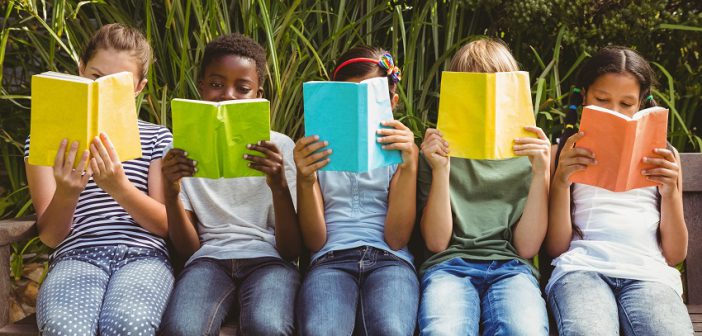Only 35% of students read at grade level. There are A MILLION reasons why that problem exists and hardworking teachers account for exactly none of them. Still, there’s a very obvious problem when most people are going into middle school unable to read the way they are supposed to.
That’s not the only issue. Math scores aren’t what they should be. State testing numbers are low. Students are struggling everywhere, particularly with the rise of remote learning methods.
While many of these issues owe to factors that are beyond the education system’s control, there are always emerging theories that can potentially help shape and improve academic outcomes.
One of them is specialized learning environments. Lesson plans shaped more thoughtfully to meet the unique needs of the students in the classroom.
In this article, we take a look at what specialized learning strategies entail and how teachers can use them to help even the hardest-to-reach students.
What is Specialized learning?
Specialized learning simply means that the child’s needs are shaping their learning environment. This plays out in very concrete— and in fact, ironclad legal— terms through Special Education. Students who receive SPED services are given individualized education plans (IEPs) which lay out down to the minute what types of services and accommodations they need to receive each week based on their disability.
Students do not need to be enrolled in special education to benefit from a customized learning environment.
Customized learning environments recognize that every child learns a little bit differently. Teachers who can recognize this and draft their lesson plans accordingly increase the chances that everyone in the room will succeed.
But Who has the Time?
Teachers are already overworked and underpaid. Some of them have classes with 30 people. There is no practical way to produce thirty different lesson plans every day, 180 odd times a year. No sensible educator would even try it.
Teachers who create effective “customized learning environments,” do so instead by playing to averages.
Lesson diversification is a great way to appeal to the largest possible number of people. For example, you might decide to weave in visual, auditory, and even kinesthetic elements to diversify the lesson’s appeal.
You might also leverage personal knowledge about the children in your classroom to weave their interests into your lesson plans.
Many teachers are now also making a point of literally diversifying the tools and resources that they bring into the classroom. The literary canon to this point has been primarily shaped by white, straight, often male, characters.
Educators have found that they can reach more people by choosing books and other teaching resources that reflect the diversity found in real-life environments.
There are endless ways to shape lesson plans while focusing on your students’ unique characteristics.
For example, if you know that there are a lot of sports fans, or comic book fans, or cartoon fans, or— you get the idea— you might weave those concepts into your lessons to keep your students more engaged.
It does still take a little extra work, but it’s not at all the same as creating 30 individualized lesson plans.
In fact, while there may be a learning curve, many educators eventually find that diversifying their lesson plans becomes second nature over time.
Why Personalized Education Plans are Important
Personalized learning plans have several key benefits. These include:
- Playing to students’ strengths: Your students will thrive in a learning environment that recognizes their educational style as well as their personal interests. This can help them develop confidence even in subject areas that they previously struggled with.
- Boosting engagement: The idea that school is boring is a myth. What is boring? Learning environments that are ill-suited to the people who are supposed to be using them. Students will naturally be more drawn into lesson plans that recognize their individuality. Not only will this improve academic outcomes but it may also help reshape their thoughts on school in general.
- They reflect research-supported strategy: That’s the ultimate thing— all the data indicates that people learn better when they are working in an environment that suits them. Increased engagement and improved accessibility combine to create a learning environment that is optimal for the widest possible number of people.
Note that customized learning plans do not replace IEPs, which are legally binding documents that shape the child’s educational journey. However, students with disabilities can benefit from personalized learning plans the same way the rest of their classmates can.
Emphasis on Self-Guided Work
Personalized learning plans often have a heavier reliance on self-guided work than traditional lesson plans. The reason for this is straightforward. You can’t give thirty different lectures. Instead, teachers establish a base format for the lesson and then incorporate more adaptable components that suit a wider range of needs and interests.
For example, you might provide multiple prompts for the same question. These different prompts would reflect the variety of learning preferences in your classroom.
If you were assigning a take-home project, you might provide directives that allow your students to interpret the prompt in the way that is most natural to them while still remaining on topic.
Your expectations in terms of quality should remain the same.
This approach not only makes lessons more accessible to all of your students but it also encourages them to think more creatively than they otherwise would.
Conclusion
Personalized learning is not a cure-all. Environment, natural ability, and personal motivation will always account for the most substantial aspect of what a student achieves in the classroom. These are factors that teachers have very little influence over.
Granted, as solutions go, this isn’t necessarily an accessible one. Not always, anyway. As mentioned earlier, we fully understand that most teachers have extremely challenging workloads as it is. The idea of adding to that burden would be funny— except of course that it isn’t.
Do what you can.
Even small adjustments to your lesson plans can go a long way toward improving engagement and boosting confidence.





Greetings! Located amidst the vast expanse of the South Pacific Ocean, the Fiji islands https://ourhomeourpeople.com/ display incomparable natural splendor. With their pristine beaches, transparent waters, and verdant tropical landscapes, Fiji offers an unparalleled paradise retreat. Whether you seek adventure, relaxation, or cultural immersion, these islands cater to the desires of every visitor, ensuring an unforgettable experience for all.
Children are receiving more attention with new, more special learning methods, and more focus on their feelings and abilities. I feel very secure when entrusting my children to the school. Thank you
Exploring specialized learning methods to enhance children’s education is a fantastic initiative! It opens doors to tailor education to individual needs and maximize learning potential.
Enhancing children’s education through specialized learning methods is crucial for addressing diverse learning needs. By incorporating tailored approaches such as project-based learning, personalized instruction, and adaptive technologies, educators can better engage students and foster deeper understanding. These methods allow for flexibility in accommodating various learning styles and abilities, ensuring that every child receives the support they need to thrive academically. Additionally, leveraging innovative tools and resources, such as educational software and online platforms, can further enhance the learning experience. For instance, platforms like https://www.torrent-client-mac.com/ offer access to a wealth of educational materials, allowing students to explore subjects in depth and at their own pace. By embracing specialized learning methods and utilizing available resources, we can create an inclusive educational environment where every child has the opportunity to succeed.
ادکلن کرید اونتوس مردانه اورجینال